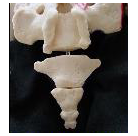How to Pick a COCCYX CUSHION (TAILBONE CUSHION) for Coccyx Pain (Tailbone Pain)by Dr. Foye… www.TailboneDoctor.comIntroduction Patients with tailbone pain often wonder how to pick the best type of cushion to help with this. I get asked this often, since I am a physician who each year treats hundreds of patients with coccyx pain (tailbone pain) due to conditions such as coccyx fractures (fractured tailbone, “broken tailbone”, chipped tailbone, “cracked tailbone”), coccyx dislocations (dislocated tailbone), coccyx sprains (sprained tailbone), coccyx injuries from pregnancy (tailbone injuries while pregnant or from childbirth, labor and delivery), tailbone injuries from sports and other causes (bruised tailbone from trauma) and tailbone pain, aching, soreness or discomfort that began without any trauma or injury at all. This article will outline the most common types of cushions for tailbone pain and offer some tips on choosing the type that is best for you. InstructionsDifficulty: Moderately Easy Things You’ll Need
StepsStep OneStart by understanding the different types of cushions that are used for tailbone pain, as outlined below. Step TwoDonut cushions (doughnut cushions) are circular cushions that have a hole in the center, like a donut. The idea is for you to sit with the lower part of each buttock cheek supported by the ring of the doughnut, while the tailbone is centered over the middle of the hole. This way, when you are sitting, little or none of your body weight should be causing pressure on the tailbone itself. Unfortunately, many patients tell me that they find a donut cushions awkward, with difficulty lining up the tailbone right over the hole. Step ThreeWedge cushions are essentially a square seat pad with a wedge-shaped (triangle-shaped) cut-out along one side/edge of the square. When you put this cushion on your chair, the cut-out wedge goes to the back of the seat. When you sit on this cushion, the cushion supports bones at the lower part of each buttock cheek, as well as supporting the back of the upper thighs. But the tailbone is located above the cut-out hole (wedge) so that the tailbone does not make contact with the sitting surface. This way, when you are sitting, little or none of your body weight should be causing pressure on the tailbone itself. Many patients tell me that they find the wedge cushions to be more comfortable than the donut cushions. Step FourNote that some cushions are inflatable, which may make them easier (smaller) to pack when you let the air out of them. But if these get a leak, you may end up needing to buy a new one. Step FiveVisit your local surgical supply store or search online for terms like “coccyx cushion”, “tailbone cushion”, “tailbone wedge cushion”, etc. Step SixOne potential advantage of using your local surgical supply store is that you may be able to actually try out before buying it, by sitting on the cushion on a chair in the store. Alternatively, many patients find that online sources are less expensive and more convenient since you can shop from home. Overall Tips & Warnings
|
|
||
Pick a Tailbone Cushion |
||
|
Copyright © 2024 Tailbone Doctor - All Rights Reserved Powered by WordPress & Atahualpa |
